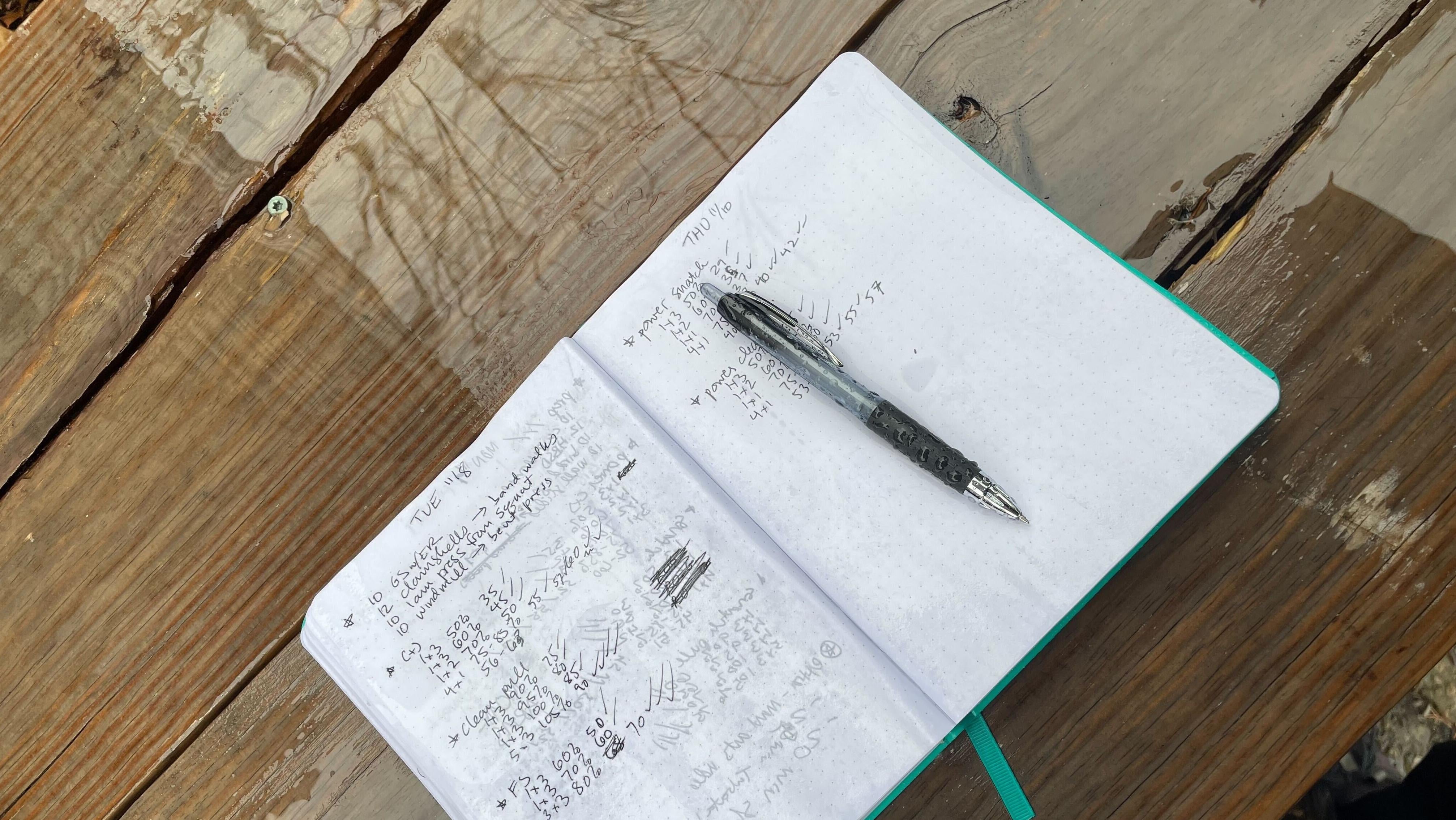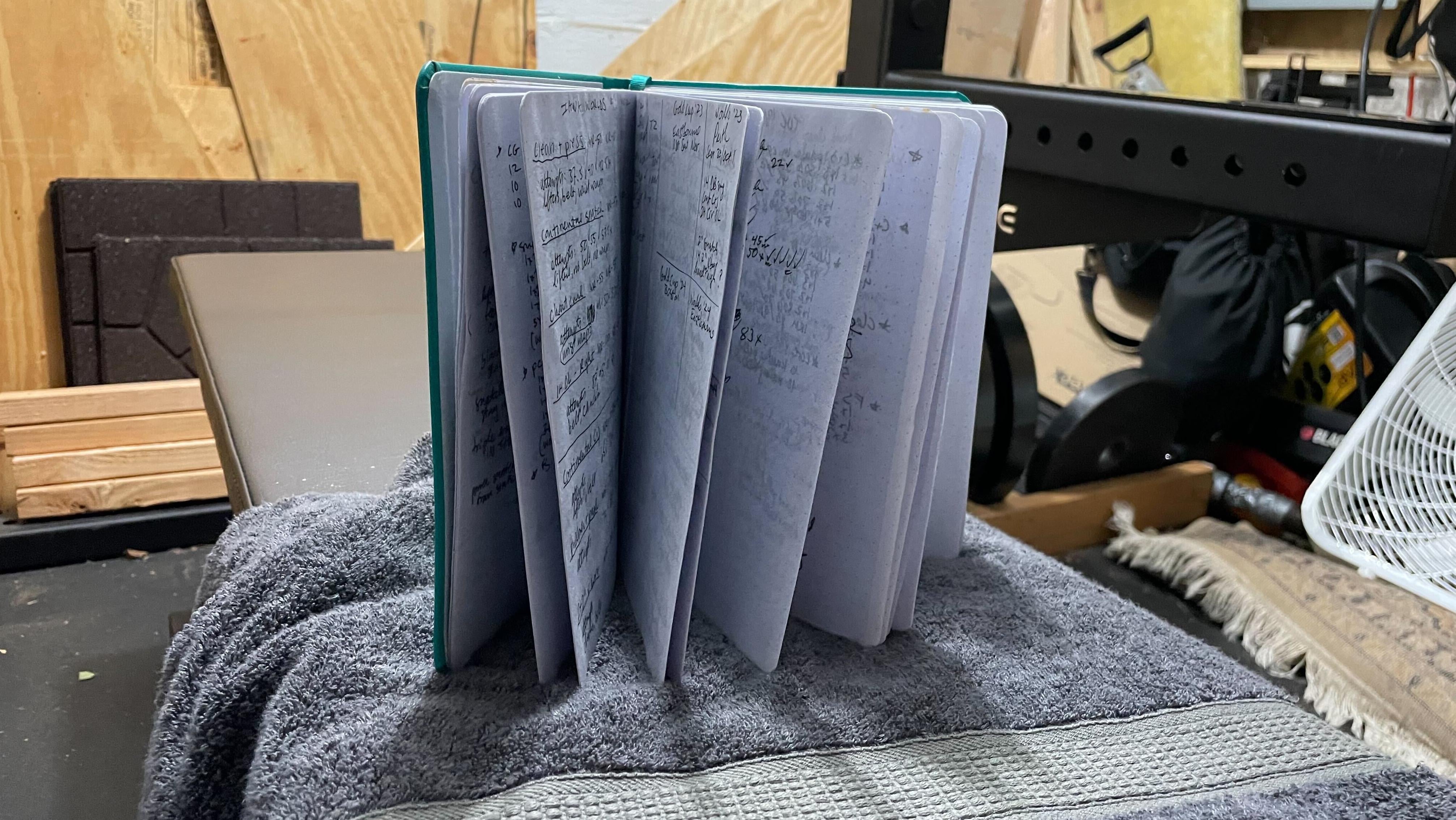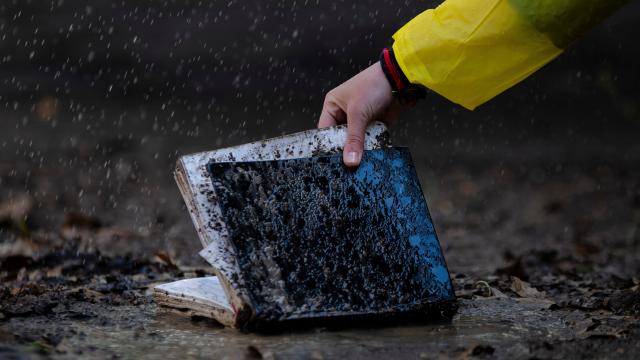The other morning, it was pouring rain. I brought an umbrella with me on my morning walk, and only on the way back — several hours into the storm — did I notice my beloved training journal sitting out on a jerk block in the driveway, where I’d left it after getting distracted while cleaning up after my workout the night before. My journal was thoroughly, utterly soaked.
As I’ve written before, the whole reason I write my workouts down in a notebook (rather than logging them in an app) is so I can own the contents, which can never be stuck in a cloud service if I forget a password. I can flip back to look at how my training has gone in the past. The history is important to me. And suddenly, three months’ worth of my training history was a wet pile of paper, possibly beyond saving. But I had to try.

Listen to the librarians
If you want to know how to handle wet books, ask a librarian. Entire volumes have been written on what to do with a library’s collection in the aftermath of a flood or a fire. This archived page from Cornell was the one I used as my guide.
There is also a book, Procedures for Salvage of Water Damaged Library Materials, full of helpful tips, including what to do if books are muddy, and the insight that you can monitor the progress of drying by weighing the book periodically; it will get lighter as it dries. Unfortunately I didn’t find this book until after I was almost done rescuing my own, but it may not be too late for you.
Oh, and one important observation from Procedures for Salvage: If you can replace the damaged book, that will almost always be cheaper than attempting to restore it. My training journal may be irreplaceable, but if you drop a paperback novel in the pool on vacation, you’re probably better off buying another copy.
First, stop the damage
The first thing I needed to do when I found the wet book was to get it out of the rain. Wet paper is soft, so do this carefully. Librarians point out that if you don’t dry out books right away, they can grow mould. So if you won’t be able to start the drying process until later — or if you have so many wet books that you’ll need to work on them in batches — you can freeze them. This will stop mould from growing and buy you time.
Heat can also encourage mould growth, so unless the air is very dry, use fans to encourage room-temperature air circulation rather than trying to apply heat as you dry the book.

Take it from “wet” to “damp”
Drying a thoroughly soaked book is a multi-step process. The Cornell page helpfully lays out what you need to do in stages, so you can begin with the one that best represents your book’s status.
Since mine was completely soaked, I knew I needed to start drying it without worrying about individual pages. The Cornell page says to keep the book closed, but put cardboard between the covers and the pages to allow a bit of air to circulate. Stand it upright if you can. (Books tend to sag toward their bottoms in normal storage, so the rule of thumb is to stand the book upside-down so that any sagging will happen in the reverse direction.)
I went off-script at the start, though. Because the book was so wet, and because it had been open when it got that way, and thus the pages were fully saturated, I thought it would be smart to squeeze water out of the book, as I had seen some (non-librarian) websites suggest squeezing or shaking. I got a rolling pin, closed the book, and rolled the water out. It was effective at removing water, but in hindsight, I ended up with a lot of unwanted creases in the pages that I couldn’t easily remove. If I had to do this over again, I would press the open book gently with my hands and move on.
One way I was able to improve on the library instructions: since I only had one book, and was not bound to the confines of library equipment, I did the first few steps on my porch. We have one of those bistro-style tables with a sort of a wire mesh tabletop, so water could drip down from the book without needing to constantly change out the towels or paper underneath. I also had a box fan, which I set up right in front of the book. So far, so good.
Dry it carefully
The next step was to put absorbent paper (I used paper towels) between the pages — but only every 20 pages or so. Thankfully there was no need to get the paper between every individual page.
I discovered during this step that the paper attaching the cover to the book block (the pages are called the block) was so soft that it tore as I opened it. (I probably should have let the book dry a little longer before attempting to do so.) That said, the librarians note that books that are so “thoroughly wet” as to be misshapen will just need to have their binding redone after drying.
That night, the pages were dry enough to remove the paper towels. I moved the book indoors and set it upside-down on a towel with pages fanned out. I still pointed the box fan at it, but made sure the breeze was gentle enough not to ruffle the pages.
Flatten it out
The next day, the pages were dry to the touch, but still seemed soft. They were a little bit wrinkled, but not very, which seemed like a sign that I’d done well so far. The next step was to flatten the book.
The covers didn’t want to close properly (everything was still a bit swollen) so I left the front cover open, arranged the book block so everything was at right angles, and put a wooden block on top of it, adding an 40 kg kettlebell on top of that for good measure. (You could also use a stack of books or household items on top, if that’s what you have.) I kept the box fan pointed at it.
By the next day, the book was in good enough condition to pause my restoration process. It was not 100% dry, but it was dry to the touch, and the pages were flat. I flipped back through the journal, and everything was legible! That was the real win; fortunately I had been using a waterproof pen, the Uni-ball Signo 207.
When I first saw the waterlogged notebook, I didn’t even care about using it again; I just wanted to be able to read my older stuff. But yesterday I took it to the gym, still a bit soft, but with some duct tape helping the cover stay on. It held up quite well. I’m calling this a success.

Leave a Reply
You must be logged in to post a comment.